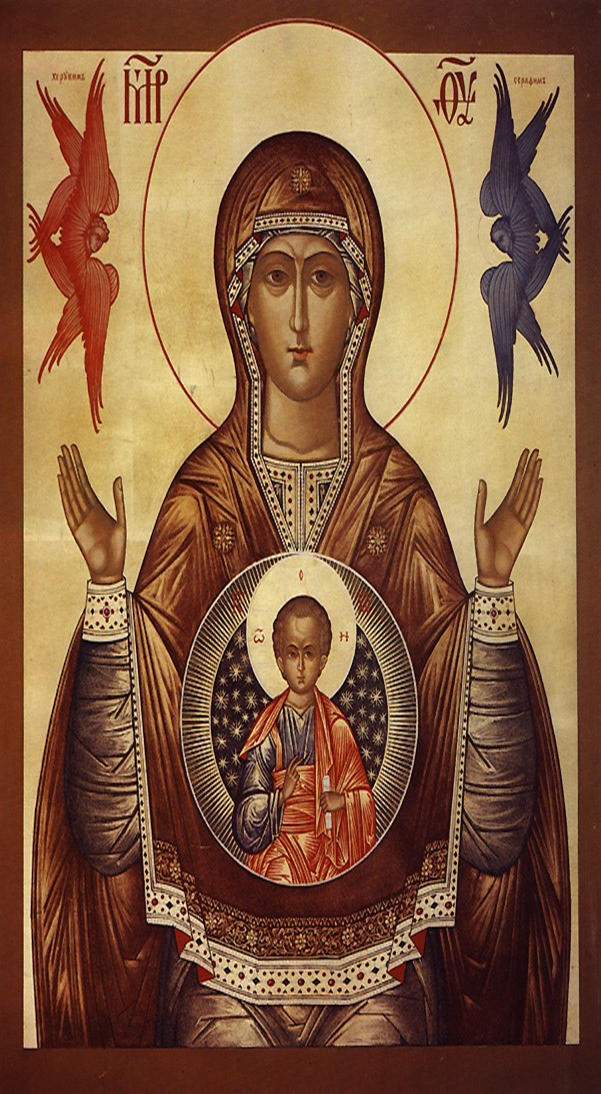PANAGIA

PANAJIA (GR:fém. of panágios, pan + hágios, the All-Holy) is one of the titles of the Mother of God. Panagia is also the term for a particular type of icon of the Theotokos, wherein she is facting the viewer directly, usually depicted full length with her hands in the orans psition (at prayer with arms outstretched), and with a medallion showing the image of Christ as a child in front of her chest. This medallion symbolically represents Jesus within her wombat the moment of the Incarnation. This type of icon is also called the Platytéra (GR : wider or more spacious) : poetically, by containing the Creator of the Universe in her womb, Mary has become "more spacious than the Heaven". This type is also sometimes called by Virgin of the Sign or Our Lady of the Sign, a reference to Isaiah 7:14. Such an image is often placed on the inside of the apse which rises directly over the altar. As with most Orthodox icons of Mary, the letters ΜΡ ΘΥ, ("Mother of God in His humanity or His flesh") are usually placed on the upper left and right of the halo of the Virgin Mary. The medallion bearing the icon of the All-Holy Theotokos and worn by a bishop is usually called a Panagia. Whaen a bishop is vested for the Divine Liturgy or another service, he wears a Panagia and a pectoral cross over his other vestments.
PANAGIA
PANAGIA (GR : fém. de panágios, pan-hágios, la Toute Sainte) est l’un des titres de la Mère de Dieu. Panagia est également le terme utilisé pour désigner un type particulier d’icône de la Théotokos, sur laquelle Marie est figurée en orante (les mains levées et tendues, les paumes ouvertes vers l’extérieur, geste traditionnel de prière), et porte Le Christ dans un médaillon rond, au niveau de son sein — l’image prophétique de l’Incarnation. Ce type d’icône est également appelé Platytera (GR : plus large ou plus spacieux) : poétiquement parlant, en recevant dans son sein, « Celui que les immensités ne peuvent contenir », Marie devient « plus vaste que les Cieux ». Cette icône, qui s’inspire d’un passage du prophète Isaïe (7:14), est aussi parfois appelée Notre-Dame du Signe. Une telle icône est souvent placée à l’intérieur de l’abside qui s’élève directement sur l’autel. Comme pour la plupart des icônes de Marie, les lettres ΜΡ ΘΥ (contraction de Métèr Théou, GR : « Mère de Dieu » dans Son humanité et Sa chair) sont généralement placées en haut, à gauche et à droite de l'auréole de Marie. Le médaillon que porte l’évêque sur la poitrine est également appelé Panagia, un rappel que le cœur de l’évêque doit toujours être gardé pur; le médaillon représente la Théotokos tenant le Christ Enfant. Lorsque l’évêque revêt son habillement pour la Divine Liturgie ou un autre service, il porte une Panagia et une croix pectorale.